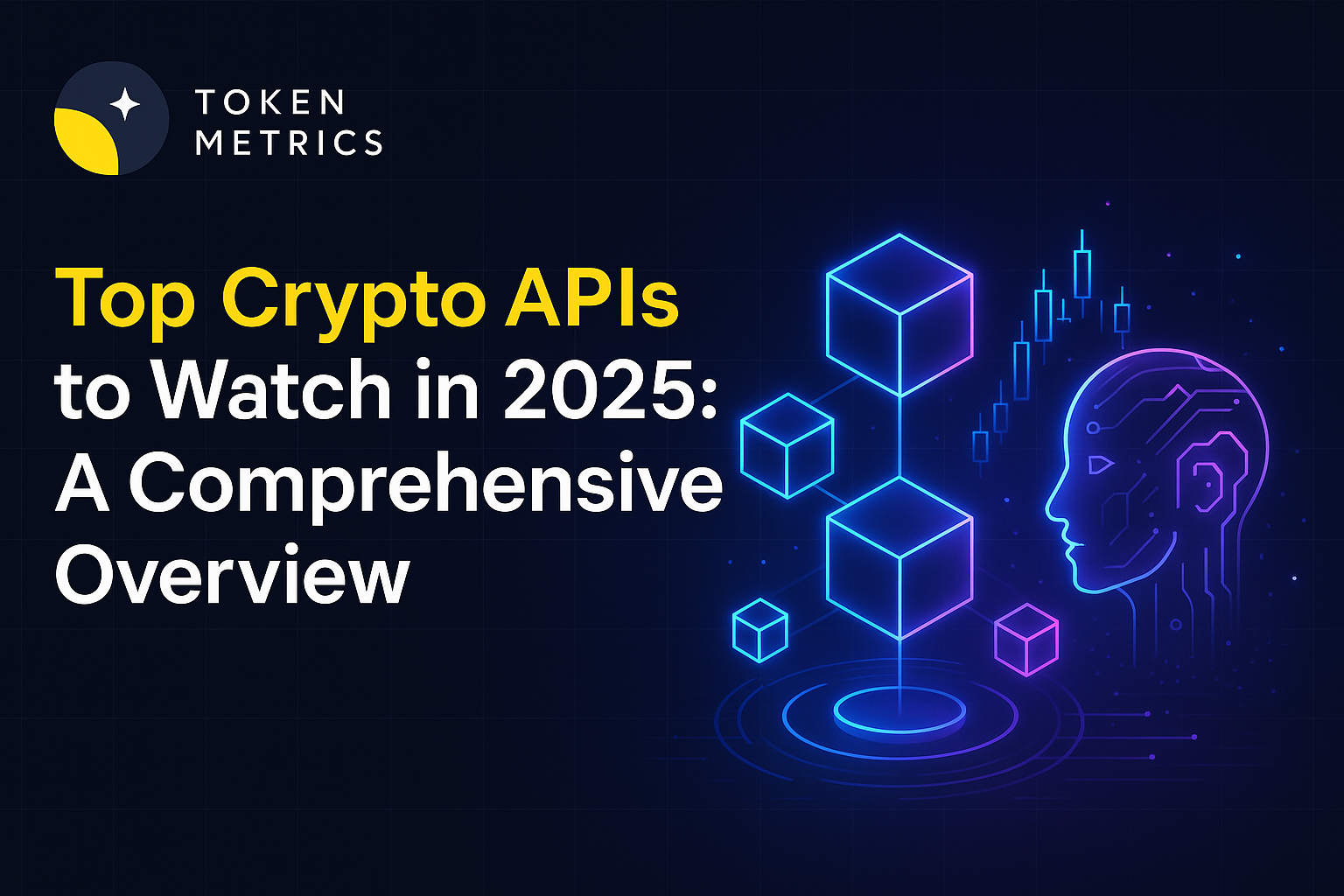
Top Crypto APIs to Watch in 2025: A Comprehensive Overview

Introduction to Crypto APIs
In the rapidly evolving cryptocurrency landscape, Access to reliable and comprehensive APIs has become essential for developers, analysts, and businesses aiming to integrate blockchain data or build crypto-focused applications. As we approach 2025, understanding which APIs offer robust features, extensive data coverage, and advanced analytical capabilities is critical to making informed technology choices. This post provides an analytical overview of the best crypto APIs available in 2025, focusing on technical features, data reliability, and integration possibilities.
What Is a Crypto API?
A crypto API is an application programming interface that facilitates access to cryptocurrency data and services. It typically provides endpoints to retrieve market data, historical prices, blockchain statistics, transaction data, order book snapshots, and other relevant crypto metrics. Developers and analysts use these APIs to collect data for research, build trading bots, track portfolio performance, or power analytics platforms.
In 2025, crypto APIs increasingly integrate AI-enhanced analytics and machine learning capabilities to offer predictive insights and streamline data interpretation.
Criteria for Selecting the Best Crypto API in 2025
Choosing the best crypto API involves multiple factors that influence usability and effectiveness:
- Data Coverage and Accuracy: Access to comprehensive, real-time, and historical data across numerous exchanges and tokens is essential.
- Latency and Reliability: Low response times and high uptime ensure efficient, real-time applications.
- Security and Compliance: Robust authentication methods and compliance with data privacy standards protect users and their data.
- Feature Set: Advanced tools such as AI-driven analytics, sentiment data, and risk metrics add significant value.
- Ease of Integration: Clear documentation, SDKs, and supportive developer communities simplify adoption.
- Cost and Scalability: Flexible pricing that accommodates growing usage volumes is important for long-term use.
Leading Crypto APIs in 2025
Among many providers, some stand out based on these criteria.
- Token Metrics API
Token Metrics API continues to be a prominent tool offering a rich array of features. It combines comprehensive historical and real-time data from multiple exchanges with AI-powered insights. This integration facilitates research, market analysis, and the development of trading strategies with sophisticated analytics embedded directly into the API endpoints. - CoinGecko API
Known for its extensive token coverage and high reliability, CoinGecko's API supplies real-time market data, historical charts, and fundamental stats. Although it lacks integrated AI analytics, its straightforward structure benefits many development applications. - CryptoCompare API
Offering comprehensive market data, including social sentiment and order book information, CryptoCompare provides multiple data tiers suitable for various user needs. Integration flexibility and data depth make it a widespread choice among developers. - Messari API
Focused on enriched crypto fundamentals and regulatory data, Messari provides deep insights with an emphasis on transparency, which helps in compliance-aware applications.
Role of AI and Analytics in Crypto APIs
AI integration in crypto APIs represents a significant advancement heading into 2025. Providers like the Token Metrics API enhance raw data with predictive models and rating systems that help developers and analysts prioritize research focus. AI can automate pattern recognition, detect anomalies, and estimate potential impacts of market factors from vast datasets.
This additional layer moves crypto APIs beyond simple data delivery toward becoming comprehensive research tools, improving operational efficiency for platforms dealing with big data.
How to Utilize Crypto APIs for Research and Development
When employing a crypto API, consider the following best practices:
- Define Clear Objectives: Identify whether the goal is market analysis, portfolio tracking, trading automation, or blockchain exploration.
- Leverage Analytical Features: Use AI-driven endpoints where available to enhance data interpretation and decision-support processes.
- Conduct Scenario Analysis: Combine historical data retrieval with model outputs to understand various market conditions.
- Validate and Test: Regularly validate the API data with independent sources and test system integrations to ensure accuracy.
- Monitor API Updates and Maintenance: Keep abreast of API changelogs to adapt applications as endpoints evolve.
Integrating Crypto Trading Platforms with APIs
Modern crypto trading platforms rely heavily on APIs for market data and trade execution. For instance, Token Metrics offers tools that integrate with various APIs to provide an enhanced user experience, combining data analytics with trading functionalities.
Choosing APIs that support trading-related features, such as order placement and balance checks, alongside data retrieval, is beneficial for building seamless crypto trading platforms.
Risk Factors and Considerations
When utilizing crypto APIs, keep these points in mind:
- Data Quality Variations: The speed and accuracy of data can vary between providers and across exchanges.
- Regulatory Changes: APIs may adjust data access or features based on evolving regulations affecting cryptocurrency markets.
- Dependence on Third-Party Providers: API outages or deprecations can disrupt dependent applications, so modular designs with fallback options are advisable.
- Security: Handling API keys responsibly and ensuring secure data transmission prevents unauthorized access.
Conclusion and Future Outlook
In 2025, the best crypto APIs will be those that combine extensive data coverage with advanced analytical capabilities. The integration of AI, as exemplified by the Token Metrics API, sets a new standard for developers and researchers aiming for deeper insights. While data quality and reliability remain paramount, the ongoing refinement of crypto APIs will likely focus on enhancing user control, predictive analysis, and ease of integration.
Exploring APIs with a critical, research-oriented approach remains essential for anyone harnessing crypto data, and tools like Token Metrics demonstrate how combining market data with AI can support comprehensive crypto ecosystems.
Disclaimer
This blog post is intended for educational purposes only and does not constitute financial advice, investment recommendations, or solicitations. Always conduct your own research and consult with professional advisers before making any financial decisions related to cryptocurrencies.

.svg)

Create Your Free Token Metrics Account

.png)




%201.svg)
%201.svg)


%201.svg)









.svg)




.png)